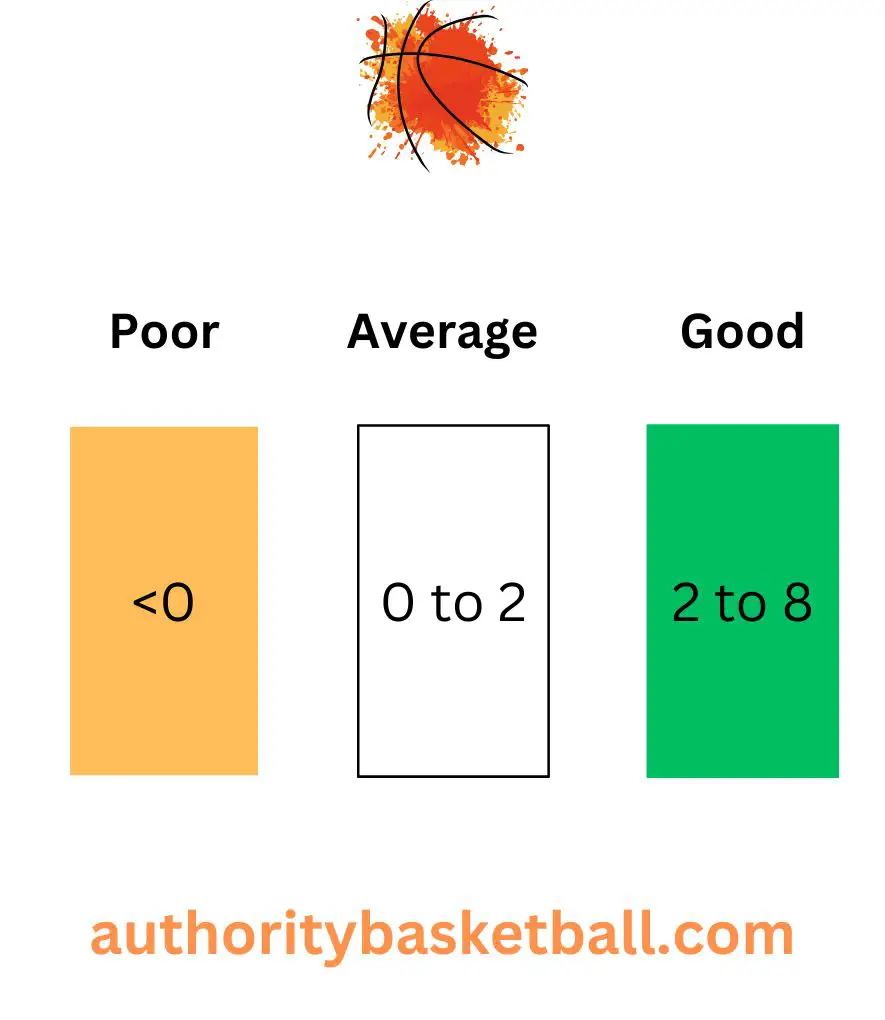If there’s one thing I’ve learned in my time of playing, watching, and basically being a fan of basketball, it’s that it can occasionally be a game of statistics.
There are a plethora of different metrics, with some simple being simple to grasp, and others presenting their fair share of complexities to understand.
One of these metrics is the plus-minus.
For newcomers to the world of basketball, this statistic may be an unfamiliar one, and even some seasoned fans may be unaware of it’s meaning and purpose within the game.
But that’s where this very article comes in, as it seeks to offer readers who’ve landed on this page more context on the meaning of plus-minus in basketball.
Let’s start with a concise answer summary…
Plus-minus is a statistical measure used in basketball to evaluate the impact of a player on the game. It is a simple yet effective way to determine how much a player contributes to the team’s success or failure. A plus (+) measures how much a team scores while a certain player is on the court. Meanwhile, a minus (-) measures how many points the team allows when that same player is on the court.
It was first introduced during the 2007–2008 season and has been an impactful analytical measurement within the NBA league.
This statistic, by indicating how much a player influences a game, simply displays how much one person contributes to their team’s overall point total.
That may sound complicated, but the statistic simply displays the positive (or negative) influence that every player has on their squad as a whole.
Because +/- removes all numbers, it’s a solid indicator for how well someone plays (or doesn’t).
Anyway, read on to learn more about it!
How is the plus minus statistic calculated?
Knowing how to calculate the plus minus is critical and there’s a simple way to do it.
Read the quote below to see how it’s done:
“It is calculated by taking the difference in the score when the player enters the game and subtracting it from the score when the player exits the game. These differences are added up over the entire game to give the score.”
Source – Breakthrough Basketball
In other words, to calculate a player’s plus minus, first add up the points scored by the team while the player is on the court.
Then, subtract the points scored by the opposing team during the same period of time.
The resulting number is then divided by the amount of minutes that particular player was present on the court for in order to determine the final plus minus figure.
Which should look like this:

Check out the video below, which explains this calculation a little more:
Now, let’s take a particular example.
If one player enters a game and his team scores 50 points during a 30 minute period which he was on, and in that same time frame his team concedes 75 points to the opposition, then his plus minus will be as follows:
Points scored by team when player is on court = 50
Points scored by opponent when player is on court = 75
Minutes played = 30
Plus minus = (50-75) ÷ 30 = -0.83
Therefore, a player with a total rating of -0.83 signifies that his team is almost a point worse off every time he steps on to the floor.
In retrospect, the metric is quite simplistic.
What is a good plus minus to have in basketball?
Considering the above criteria, a good plus minus (+/-) tally is often between 2 and 8.
Anything between 2 and 0 is considered an okay player, 0 is considered an average player, and anything below that is considered poor.

It’s not always so straightforward to determine how good a player is using statistics, but the plus minus metric is a decent place to start.
Most all-stars have a +/- rating between 2.5 and 5.
Over that threshold, you’ll find extremely exceptional contributions like those of:
- LeBron James;
- Magic Johnson; and
- Michael Jordan.
During their careers, these great players have all had high plus/minus ratings.
Who has the highest plus minus in NBA history?
Timothy Theodore Duncan has the best plus-minus of all time in the NBA with +8910 in 1392 games for an average PM of +6.4 a game.

He started playing in (1997) with the San Antonio Spurs and retired in (2016), donning the same jersey.
In every match Duncan played, he brought an average of 19 points, 10.8 rebounds, three assists, 2.2 blocks, and 0.7 steals per game to the court.
Are there other types of plus minus in basketball?
In the NBA, plus/minus is a general metric used to assess a player’s value to the team.
To be honest, it’s a little too simplistic to determine whether a basketball player is performing well or not.
As a result, some basketball analysts and experts decided to create plus minus spin-offs that are more relevant to various elements of the game.
limit it to various quantitative figures similar to the classic plus/minus method.
These quantitative figures similar to the classic plus/minus method are listed below…
1. Defensive plus minus
A defensive plus minus (DPM) is a plus-minus derivative that calculates the point differential per 100 possessions regardless of whether the player is on or off the floor.
The DPM is used to assess a player’s defensive worth.
2. Net plus minus
Net plus minus (NPM) is the sum of a player’s offensive and defensive net plus minus.
Here is how it works, in simple terms:

In this case, the net plus minus would be the offensive net plus minus (40) added to the defensive net plus minus (-35).
This gives a final net plus minus figure of 5.
3. Adjusted plus minus
Adjusted plus minus ratings show how many points a certain player adds to a team’s scoring margin in comparison to the league average, whose adjusted +/- value is zero throughout the course of a regular game.
It’s assumed that a team will have 100 offensive and 100 defensive possessions in a regular-season game.
If a +6.5 APM player plays with four average teammates, his team will average around 6.5 points more per 100 possessions than a team of five average players.
The Greek-Nigerian basketball player Giannis Antetokounmpo – who currently plays for the Milwaukee Bucks – was the NBA’s most valuable player in the 2019/2020 season.

He concluded the campaign with a +10.3 APM rating, which elevates the worth of his teammates over what it would be without him.
4. Real plus minus
Real plus minus (RPM) can be broken down into both offensive and defensive metrics:
- Offensive Real Plus-Minus (ORPM): A player’s average impact on his team’s offensive performance, as measured by the points scored per 100 offensive possessions.
- Defensive Real Plus-Minus (DRPM): A player’s average impact on his team’s defensive performance, as measured by the points allowed per 100 offensive possessions.
Closing thoughts
In conclusion, plus-minus is a crucial statistic in basketball that helps coaches and analysts evaluate a player’s overall impact on the game.
The metric is used to measure how effective a player is in a game by taking into account the points scored by and against a team when a certain player is on the court.
Ultimately, it’s a simple yet effective statistical way to determine a player’s contribution to the team’s overall success or failure.
For further reading on basketball analytics, you can have a look at some of our other pieces of content on our blog, such as:
- What a seed in basketball is;
- The meaning of the APG metric in basketball; and
- What the FG acronym stands for in basketball
- The Most Popular Prop Bets Made During the NCAA Final Four Tournament - February 9, 2024
- Evaluating the Enigma: Does LeBron James Possess a No-Trade Clause? - May 16, 2023
- Gravity’s Dance: Unveiling the Art of Bouncing Basketballs - May 16, 2023

